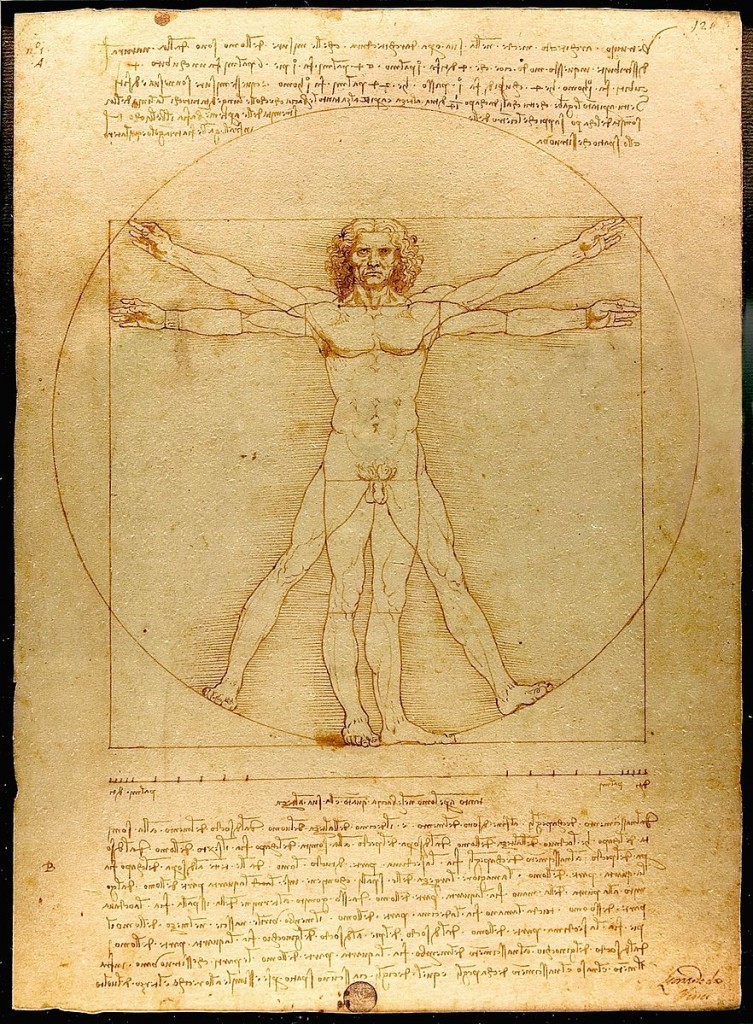In her essay for “This Idea Must Die” (2015), Susan Blackmore writes:
“Consciousness is not some weird and wonderful product of some brain processes but not others. Rather, it’s an illusion constructed by a clever brain and body in a complex social world. We can speak, think, refer to ourselves as agents, and so build up the false idea of a persisting self that has consciousness and free will.”
(I am very grateful to Maria Popova of Brain Pickings, who wrote about this book — which I bought immediately — in her Monday post).
Illusion or not, consciousness is not something we just “believe in”: it is our immediate experience, and the social world as we know it wouldn’t be possible without this idea of Self endowed with consciousness and free will (just consider for a moment all the legal and political implications of abandoning this idea). This conflict between experience and knowledge is thus not just a matter of abstract scientific discussions; it touches our very existence on an urgently personal level.

This is why Juilian Jaynes’s book on the origin of consciousness is so important — because it offers one of the most compelling (even if controversial) theory on how this illusion is constructed, and when and why it originated. One of his core ideas is that the cornerstone of consciousness is metaphor. A mind boggling implication is that consciousness is, historically speaking, a very recent phenomenon (somewhere between two and three millennia old) — a cultural (rather than biological) development, a stage in the evolution of language. According to Jaynes, the heroes of Iliad and the early prophets of the Old Testament didn’t have this particular illusion (they had an entirely different one instead). This means, among other things, that we must be right in the midst of a relatively fast evolution of consciousness, and — as far as I am concerned — this radically changes the concept of history and our place in it.
So what is metaphor, and how can it generate consciousness? Perhaps most familiar — and certainly most conspicuous — are fresh, striking metaphors we encounter in literature, like “Juliet is the sun” or “slings and arrows of outrageous fortune”, but that’s not what Jaynes means. He uses the word in a much more general sense:
“The most fascinating property of language is its capacity to make metaphors. But what an understatement! For metaphor is not a mere extra trick of language, as it is so often slighted in the old schoolbooks on composition; it is the very constitutive ground of language. I am using metaphor here in its most general sense: the use of a term for one thing to describe another because of some kind of similarity between them or between their relations to other things. There are thus always two terms in a metaphor, the thing to be described, which I shall call the metaphrand, and the thing or relation used to elucidate it, which I shall call the metaphier. A metaphor is always a known metaphier operating on a less known metaphrand. I have coined these hybrid terms simply to echo multiplication where a multiplier operates on a multiplicand.”
Nowadays, more common terms for what he calls metaphier and metaphrand are source and target; these, of course, are metaphors themselves, and you can perhaps feel how useful this way of extending language is. I feel quite certain it will be easier for you to remember that the more familiar thing in metaphor is called “source”, and the thing to be described, “target” — rather than to remember which of them is “metaphier” and which “metaphrand”.

Whatever terms we choose, Jaynes is right: metaphors are indeed ubiquitous in language; in fact, there is hardly a meaningful sentence without a metaphor. The following list is just scratching the surface:
“The human body is a particularly generative metaphier, creating previously unspeakable distinctions in a throng of areas. The head of an army, table, page, bed, ship, household, or nail, or of steam or water; the face of a clock, cliff, card, or crystal; the eyes of needles, winds, storms, targets, flowers, or potatoes; the brow of a hill; the cheeks of a vise; the teeth of cogs or combs; the lips of pitchers, craters, augers; the tongues of shoes, board joints, or railway switches; the arm of a chair or the sea; the leg of a table, compass, sailor’s voyage, or cricket field; and so on and on.”
If we look at a language synchronically, as it is now, some metaphors are “live” and some are “dead”. A dead metaphor is one whose source is lost and forgotten: unless you know the word’s etymology, you would never recognise it as a metaphor. Jaynes writes:
“In early times, language and its referents climbed up from the concrete to the abstract on the steps of metaphors, even, we may say, created the abstract on the bases of metaphors.
It is not always obvious that metaphor has played this all-important function. But this is because the concrete metaphiers become hidden in phonemic change, leaving the words to exist on their own. Even such an unmetaphorical-sounding word as the verb ‘to be’ was generated from a metaphor. It comes from the Sanskrit bhu, “to grow, or make grow,” while the English forms ‘am’ and ‘is’ have evolved from the same root as the Sanskrit asmi, “to breathe.” It is something of a lovely surprise that the irregular conjugation of our most nondescript verb is thus a record of a time when man had no independent word for ‘existence’ and could only say that something ‘grows’ or that it ‘breathes’.”

Our languages are filled with such dead metaphors with forgotten source meanings, which — at the present time — can play no part in generating consciousness. But there are also lots of “live” metaphors, where the source meaning still “works” as a component of the target meaning.
Consider any word which has meanings both from the physical-behavioural world and from the inner domain of cognition. For example, grasp: one can grasp a stone or one can grasp an idea.
You don’t need to know the etymology of this verb to have a clear intuition about what is the target here and what the source, which meaning is primary and which metaphorical: the direction is always from the “outer” world to “inner”, from “objective” to “subjective”, from physical to cognitive. This phenomenon is not even directly related to the actual history of a word: it’s a feature of one’s own internalised language, the language’s particular manifestation living within the individual brain. The mind refers to the outer, objective world to “model” its inner world of ideas: grasping an idea is like grasping a stone, not vice versa.
Have you ever wondered what actually happens in the brain when you understand a word? For example, if you listen to someone saying something as simple as that they jumped, what’s actually happening in your brain to create the understanding of what you’ve heard? There is an increasing body of evidence that such understanding involves partial simulation of the very action of jumping. The pattern of neural codes engaged in understanding the word jump and the pattern of neural codes engaged in actual jumping have a portion in common (but obviously not enough to make you jump whenever you say or hear the word). And if we hear the same word used metaphorically — for example, something about someone jumping to conclusions — it would still involve processing of the word jump, and hence the corresponding neural simulation of actual jumping. The sensory properties of the source are thus brought in to contribute to the target meaning.
I hope it is gradually getting clear how metaphors can generate the illusion of special inner mind-space where consciousness “takes place”. Every time the brain processes a sentence about grasping an idea or jumping to conclusion, it simulates a space where these actions might take place, a space where ideas, conclusions, thoughts are modelled as “things” in the outer world — something one can see, approach, jump to, or get hold of.
Consciousness itself emerges as a special kind of “metaphorical” operation in which the world around us is the source and what’s happening inside us, the target. And, of course, this internal model of the outside world contains a little “I” who acts there — indeed, if I approach a problem both “I” and the “problem” must be located within the same space. This thinking and willing “I” turns out to be a tiny little actor on the stage within my own mind-space. Jaynes writes about these illusionary mind-spaces:
“They are a part of what it is to be conscious and what it is to assume consciousness in others. Moreover, things that in the physical-behavioral world do not have a spatial quality are made to have such in consciousness. Otherwise we cannot be conscious of them. This we shall call spatialization.
Time is an obvious example. If I ask you to think of the last hundred years, you may have a tendency to excerpt the matter in such a way that the succession of years is spread out, probably from left to right. But of course there is no left or right in time. There is only before and after, and these do not have any spatial properties whatever—except by analog. You cannot, absolutely cannot think of time except by spatializing it. Consciousness is always a spatialization in which the diachronic is turned into the synchronic, in which what has happened in time is excerpted and seen in side-by-sideness.”
This spatialisation of time is what allows our little metaphorical “I”s — the actors within our mind-spaces — to travel in time: reminiscence about the past, imagine different futures (the latter feature is particularly important, because of its potential role in willing and decision-making).
But the spatialisation of time is also a metaphor: we understand time by modelling it as a kind of space, and this, too, happens in language. The time-as-space metaphor tends to be embedded not only into the vocabulary, but in the grammar as well — for example, when we use spatial prepositions for time periods (something may happen in America and in winter, within a building or within a month). Just as we learn to understand thoughts and ideas as objects in space when we acquire language in childhood, so do we learn to think of time as a space.
This is how, according to Jaynes (or at least to my understanding of his theory), consciousness is generated in each of us now, by modern languages and their live metaphors. But languages were not always like this: their inherent models of our inner worlds weren’t always there, they have evolved over time. And before that happened, there could have been no consciousness as we know it. I will return to this — historical — dimension of Jaynes’s theory next week. Stay tuned…
[share title=”If you’ve enjoyed reading this post, please consider sharing it with your friends!” facebook=”true” twitter=”true” google_plus=”true” linkedin=”true” pinterest=”true” reddit=”true” email=”true”]
[content_band inner_container=”true” no_margin=”true” padding_top=”5px” padding_bottom=”5px” border=”horizontal” bg_color=”#ddb57a”] Related posts:[/content_band]
-
Julian Jaynes on consciousness and language: Part I
-
Julian Jaynes and William Shakespeare on the origin of consciousness in the breakdown of bicameral mind